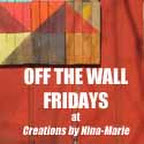Welcome to those dropping by from the Aurifil blog! If not, check out my guest post on AURIbuzz where I was challenged by OLFA and Aurifil in the Slice & Stitch Challenge, a monthly event during which one Aurifil Artisan and one OLFA Ambassador each share how they put an OLFA tool and a specific weight of Aurifil thread to work.
I had the privilege of using 80 wt Aurifil and the OLFA Rotary Circle Cutter.
Don't tell anyone, but this was really not challenging. Both are soooooo easy to use. Getting them out of my tight grasp after I've experienced playing with these awesome notions in conjunction--- now that would be a challenge!
As promised, I'll divulge some the techniques I explored during the process of creating my Galaxy Quilt, and how you can apply these methods to your own projects. Today I'll be sharing strategies for invisible machine appliqué. Over the course of the coming weeks, I'll be adding weekly posts explaining more of the techniques, so be sure to following Quilting Mod, or subscribe by e-mail. Before I give you the scoop, here are my astronauts making the foreign planet inhabitable by introducing OLFA and Aurifil.
Invisible Machine Appliqué
The Galaxy Quilt gave me an opportunity to try methods from Machine Finished Hand Applique with Beth Ferrier on Bluprint, as recommended by Nancy Arseneault when I admired her beautiful work at Quilt Fiesta. Beth has an out-ot-print book, Hand Applique by Machine, also. I outfitted myself with the gear, which included foundation stabilizer, turning rods, tweezers and a glue pen with refill. Budget alternatives are freezer paper instead of foundation stabilizer, a precision screwdriver set or chopsticks instead of the rods, economical tweezers, and a school glue stick.
When using freezer paper, I tore two identical lengths and ironed one on top the other with the waxy side downward. The double layer is stiffer and preshrunk so it doesn't get smaller after I apply it to the fabric with the heat of an iron. I then used the OLFA Circle Cutter to cut a circle the exact size I'd like my planet. I adjust the OLFA Circle Cutter 1/4" larger using the guage to cut my fabric. I pressed the freezer paper circle in the center of the wrong side of the planet fabric with the waxy side toward the fabric. When I used the foundation stabilizer, I applied the stabilizer circle to the wrong side of the fabric with glue stick, and used a dry iron to dry the glue. While I've heard there's a fusible side to the foundation stabilizer, I found nothing to indicate this.
Run glue around the seam allowance, one small section at a time, so it doesn't dry before you get it turned over. If you have the turning rods, I recommend using the forked end to hold the foundation in place near the seam you're turning. Use the slanted side of the other rod to push the seam allowance over a bit at a time.
Spinning the appliqué shape on an OLFA Rotating Mat is helpful so that getting an ergonomic angle doesn't require lifting the shape from the mat and repositioning repeatedly.
I found the foundation stabilizer to be less stiff than freezer paper. At times, the stabilizer would fold onto itself and make the outer curve flatten into a straight line. The freezer paper does not have this problem; however, it must be removed unlike the stabilizer, which is meant to remain in the quilt and will turn into fiber as the quilt is washed in the future.

If the use of glue was liberal, it can be slightly challenging to remove the entirely of the freezer paper without fraying the edge of the fabric. Press the edges of the planet over again after removing the freezer paper.
Stitch the planet to the background using an 80 wt Aurifil thread that matches the planet and a zigzag stitch with a length of 2 and a width of 1. Stitches should alternate being on the planet and just barely on the background. Reduce the length to .3 to start and stop. If freezer paper was used, I recommend using a stabilizer on the wrong side of the background.
To add a ring to a small planet, the shape can be traced onto the foundation stabilizer with a Frixion pen and cut out. Glue to the desired fabric and trim 1/4" around the shape.
The ring only needs to extend 1/4" behind each side of the planet since it will be hidden underneath the planet.

I had the privilege of using 80 wt Aurifil and the OLFA Rotary Circle Cutter.
Don't tell anyone, but this was really not challenging. Both are soooooo easy to use. Getting them out of my tight grasp after I've experienced playing with these awesome notions in conjunction--- now that would be a challenge!
As promised, I'll divulge some the techniques I explored during the process of creating my Galaxy Quilt, and how you can apply these methods to your own projects. Today I'll be sharing strategies for invisible machine appliqué. Over the course of the coming weeks, I'll be adding weekly posts explaining more of the techniques, so be sure to following Quilting Mod, or subscribe by e-mail. Before I give you the scoop, here are my astronauts making the foreign planet inhabitable by introducing OLFA and Aurifil.
Invisible Machine Appliqué
The Galaxy Quilt gave me an opportunity to try methods from Machine Finished Hand Applique with Beth Ferrier on Bluprint, as recommended by Nancy Arseneault when I admired her beautiful work at Quilt Fiesta. Beth has an out-ot-print book, Hand Applique by Machine, also. I outfitted myself with the gear, which included foundation stabilizer, turning rods, tweezers and a glue pen with refill. Budget alternatives are freezer paper instead of foundation stabilizer, a precision screwdriver set or chopsticks instead of the rods, economical tweezers, and a school glue stick.
When using freezer paper, I tore two identical lengths and ironed one on top the other with the waxy side downward. The double layer is stiffer and preshrunk so it doesn't get smaller after I apply it to the fabric with the heat of an iron. I then used the OLFA Circle Cutter to cut a circle the exact size I'd like my planet. I adjust the OLFA Circle Cutter 1/4" larger using the guage to cut my fabric. I pressed the freezer paper circle in the center of the wrong side of the planet fabric with the waxy side toward the fabric. When I used the foundation stabilizer, I applied the stabilizer circle to the wrong side of the fabric with glue stick, and used a dry iron to dry the glue. While I've heard there's a fusible side to the foundation stabilizer, I found nothing to indicate this.
To assist the seam allowance in turning under without creating lumpy pleats, I cut slits in the seam allowance almost to the stabilizer or freezer paper, but not quite.
Run glue around the seam allowance, one small section at a time, so it doesn't dry before you get it turned over. If you have the turning rods, I recommend using the forked end to hold the foundation in place near the seam you're turning. Use the slanted side of the other rod to push the seam allowance over a bit at a time.
Spinning the appliqué shape on an OLFA Rotating Mat is helpful so that getting an ergonomic angle doesn't require lifting the shape from the mat and repositioning repeatedly.
I found the foundation stabilizer to be less stiff than freezer paper. At times, the stabilizer would fold onto itself and make the outer curve flatten into a straight line. The freezer paper does not have this problem; however, it must be removed unlike the stabilizer, which is meant to remain in the quilt and will turn into fiber as the quilt is washed in the future.

If the use of glue was liberal, it can be slightly challenging to remove the entirely of the freezer paper without fraying the edge of the fabric. Press the edges of the planet over again after removing the freezer paper.
Stitch the planet to the background using an 80 wt Aurifil thread that matches the planet and a zigzag stitch with a length of 2 and a width of 1. Stitches should alternate being on the planet and just barely on the background. Reduce the length to .3 to start and stop. If freezer paper was used, I recommend using a stabilizer on the wrong side of the background.
To add a ring to a small planet, the shape can be traced onto the foundation stabilizer with a Frixion pen and cut out. Glue to the desired fabric and trim 1/4" around the shape.
The ring only needs to extend 1/4" behind each side of the planet since it will be hidden underneath the planet.
Turn the edges that won't be hidden by the planet over using the tools or a precision screwdriver and/or chopstick.
I'll be back next week with more details on the techniques involved in the creation of the Galaxy Quilt, so be sure to follow via e-mail or your favorite blog reader.

































































